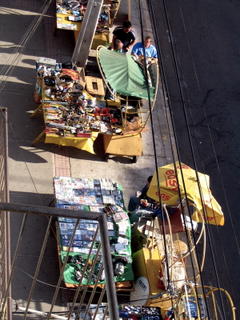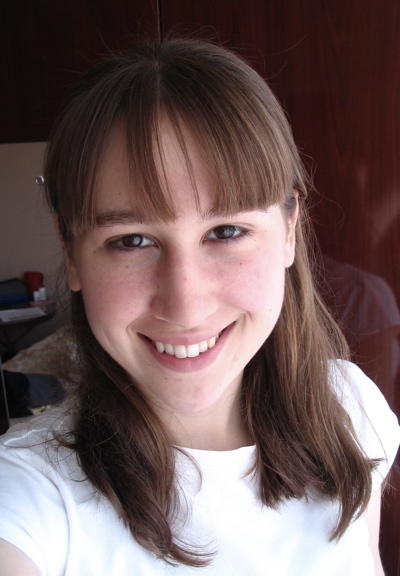My host family's house
Here are a couple of pictures I took around the house today, so you can see what its like where I'm living.

"El living," with the dining table in the front. Our house is very spacious for Chilean standards, and the huge windows in almost every room make it feel even bigger.

The kitchen. On the counter you can see a box of powdered milk (real milk doesn't seem to exist here). Hanging from the window crank is a plastic bag that's always kept full of white bread. I've heard that Chileans are some of the biggest consumers of bread in the world, and I don't doubt it. Also on the counter is a big basket which is kept full of truly delicious fruit--mandarin oranges, apples, bananas, avocado, chirimoya, kiwi, and other things, that my host mom gets at the market. Finally, the silver bowls are kept full of salt and sugar, respectively. I've never seen people put as much salt and sugar on their food as I have in Chile!

Our laundry hanging out to dry on the balcony.

This is looking down on my street, Calle Uruguay, from the balcony. Its packed with vendors, who sell everything from fruit to cellphones to wrenches to nail-polish.

This is the "calefont," an important part of every Chilean home. Its a kind of gas hot-water heater that you have to light every time you want to do the dishes, do laundry, or take a shower. They're often kept inside, but because they're old and funky, they have a reputation for being very dangerous and either exploding or leaking gas. The CIEE program requires all their host families to keep their Calefont's outside or on a balcony. Ours is very finicky, and when I first got here it took me about 4 extra-long matches to actually light it. Now I'm down to 1 small match : )

The view from my room, of the Valparaíso "cerros" (hills).

"El living," with the dining table in the front. Our house is very spacious for Chilean standards, and the huge windows in almost every room make it feel even bigger.

The kitchen. On the counter you can see a box of powdered milk (real milk doesn't seem to exist here). Hanging from the window crank is a plastic bag that's always kept full of white bread. I've heard that Chileans are some of the biggest consumers of bread in the world, and I don't doubt it. Also on the counter is a big basket which is kept full of truly delicious fruit--mandarin oranges, apples, bananas, avocado, chirimoya, kiwi, and other things, that my host mom gets at the market. Finally, the silver bowls are kept full of salt and sugar, respectively. I've never seen people put as much salt and sugar on their food as I have in Chile!

Our laundry hanging out to dry on the balcony.

This is looking down on my street, Calle Uruguay, from the balcony. Its packed with vendors, who sell everything from fruit to cellphones to wrenches to nail-polish.

This is the "calefont," an important part of every Chilean home. Its a kind of gas hot-water heater that you have to light every time you want to do the dishes, do laundry, or take a shower. They're often kept inside, but because they're old and funky, they have a reputation for being very dangerous and either exploding or leaking gas. The CIEE program requires all their host families to keep their Calefont's outside or on a balcony. Ours is very finicky, and when I first got here it took me about 4 extra-long matches to actually light it. Now I'm down to 1 small match : )

The view from my room, of the Valparaíso "cerros" (hills).


0 Comments:
Post a Comment
<< Home